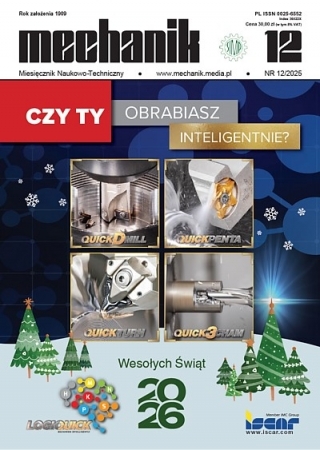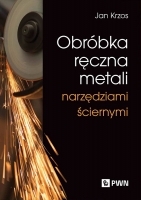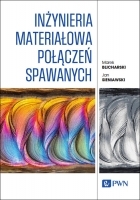Model procesu spalania w 4-suwowym silniku okrętowym
Model of the combustion process in the marine 4-stroke diesel engine
Mechanik nr 10/2015 - Wersje autorskie artykułów z I Konferencji „Osiągnięcia Studenckich Kół Naukowych Uczelni Technicznych” zamieszczone na płycie CD
STRESZCZENIE: W pracy przedstawiono model procesu spalania w 4-suwowym silniku okrętowym o zapłonie samoczynnym dla wyznaczenia zawartości tlenków azotu (NOx) w gazach wylotowych. Prezentowany model jest iteracyjnym modelem 3-wymiarowym, zbudowanym na ruchomej, przestrzennej siatce przestrzeni cylindrowej. Model obejmuje matematyczny opis wtrysku, rozpylania, parowania i zapłonu paliwa oraz rozprzestrzeniania się płomienia w przestrzeni cylindrowej. W celu wyznaczenia udziałów NOx dokonano również opisu wymiany ciepła z elementami konstrukcyjnymi cylindra. Dane wejściowe oraz warunki brzegowe modelu pochodzą z bezpośrednich pomiarów. Model został pozytywnie walidowany na podstawie charakterystyk ciśnienia spalania oraz udziałów NOx i tlenu w gazach wylotowych dla całego rozpatrywanego zakresu obciążeń silnika.
SŁOWA KLUCZOWE: silnik okrętowy, silnik o zapłonie samoczynnym, CFD, udział NOx, spalanie
ABSTRACT: Manuscript presents a model of the combustion process in marine four-stroke diesel engine to determine the nitric oxides fraction (NOx) in the exhaust gas. This is iterative, 3-dimensional model, built on geometric mesh of the engine cylinder chamber. The model includes mathematical description of fuel injection, spray, evaporation and auto ignition and flame propagation in the cylinder. In order to determine the NOx fraction, the heat exchange phenomena description between structural elements of the cylinder has been done. The input data and boundary conditions are collected from the direct measurements. The model has been successfully validated based on the characteristics of the in-cylinder combustion pressure and NOx and oxygen fractions in the exhaust gas for all considered loads of the engine.
KEYWORDS: marine engine, diesel engine, CFD, NOx fraction, combustion
BIBLIOGRAFIA / BIBLIOGRAPHY:
- Carlton J. “Marine Propellers and Propulsion Third Ed.” New York: Elsevier Ltd., 2012,
- Sarvi A., Fogelholm C.J., Zevenhoven R. “Emissions from large-scale medium-speed diesel engines: 1. Influence of engine operation mode and turbocharger” Fuel processing technology (2008) 89, 510-519,
- Agarwal D., Singh S. K., Agarwal A. K. “Effect of Exhaust Gas Recirculation (EGR) on performance, emissions, deposits and durability of a constant speed compression ignition engine” Applied Energy (2011) 88, 2900-2907,
- Sarvi A., Fogelholm C.J., Zevenhoven R. “Emissions from large-scale medium-speed diesel engines: 2. Influence of fuel type and operating mode” Fuel processing technology (2008) 89, 520-527,
- Sarvi A., Zevenhoven R. “Large-scale diesel engine emission control parameters” Energy (2010) 35, 1139-1145,
- Pawletko R., Polanowski S. “Influence of gas channels of medium speed marine engines on the accuracy of determination of diagnostic parameters based on the indicator diagrams” Journal of Polish CIMAC 7 (2012) 2, 139-146,
- Praca zbiorowa “The World Merchant Fleet in 2013, Statistics from Equasis” Lisbon: Portugal, 2014,
- Kowalski J. “An experimental study of emission and combustion characteristics of marine diesel engine with fuel pump malfunctions.” Appl Therm Eng. 65 (2014) 1-2, 469-479,
- Priesching P., Ramusch G., Ruetz J., Tatschl R.. “3D-CFD Modeling of Conventional and Alternative Diesel Combustion and Pollutant Formation – A Validation Study.” SAE Technical Paper. 2007-01-1907,
- Sahin Z., Durgun O. “Multi-zone combustion modeling for the prediction of diesel engine cycles and engine performance parameters.” Applied Thermal Engineering. (2008) 28, 2245-2256,
- Kowalski J., Jaworski P. “3D mesh model for RANS numerical research on marine 4-stroke engine” Journal of Polish CIMAC. 9 (2014) 1, 87-94,
- Kowalski J. „Analiza parametrów rozpylania i parowania paliwa z wtryskiwacza 4-suwowego silnika okrętowego” Zeszyty Naukowe AM. (2014) 83, 98-109,
- Soid S.N., Zainal Z.A. “Spray and combustion characterization for internal combustion engines using optical measuring techniques – A review” Energy 36 (2011) 2, 724-741,
- Brusiani F., Falfari S., Pelloni P. “Influence of the Diesel Injector Hole Geometry on the Flow Conditions Emerging from the Nozzle” Energy Procedia (2014) 45, 749-758,
- Park S.W., Reitz R.D. “A gas jet superposition model for CFD modeling of group-hole nozzle sprays” Int J Heat Fluid Flow 30 (2009) 6, 1193-1201,
- Samimi Abianeh O., Chen C.P. “A discrete multicomponent fuel evaporation model with liquid turbulence effects” Int J Heat Mass Transf. 55 (2012) 23-24, 6897-6907,
- Moon S., Bae C., Choi J., Abo-Serie E. “The influence of airflow on fuel spray characteristics from a slit injector” Fuel 86 (2007) 3, 400-409,
- Pastor J., Javierlopez J., Garcia J. “A 1D model for the description of mixing-controlled inert diesel sprays” Fuel 87 (2008) 13-14, 2871-2885,
- Fushui L., Lei Z., Baigang S., Zhijie L., Schock H.J. “Validation and modification of WAVE spray model for diesel combustion simulation” Fuel 87 (2008) 15-16, 3420-3427,
- “AVL fire Combustion Module manual” Austria Gratz: AVL List Gmbh, 2009,
- Kowalski J. “Concept of the multidimensional diagnostic tool based on exhaust gas composition for marine engines” Applied Energy (2015) 150, 1-8.




















